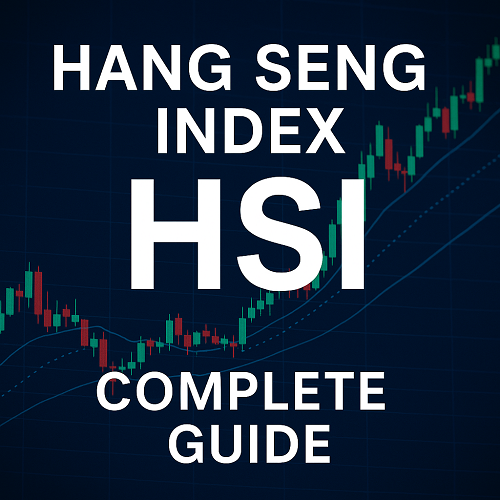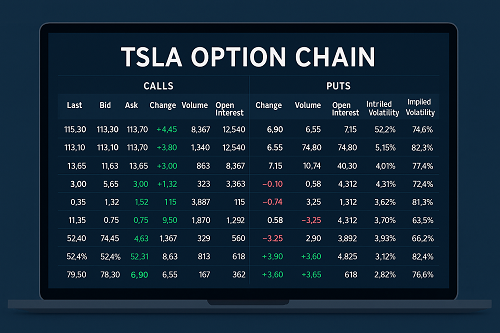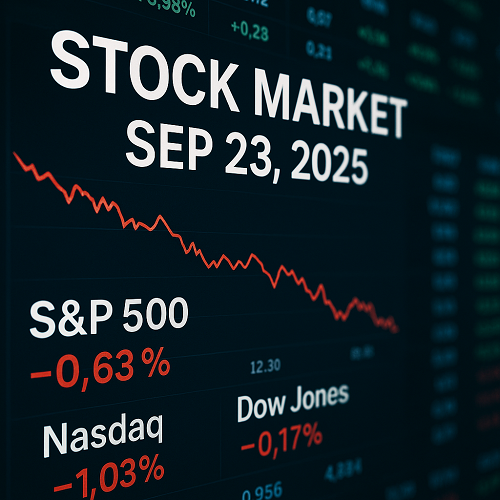In 2025, self-directed investing in Canada continues to evolve at breakneck speed. New brokerages, shifting commission structures, advanced platform tools, and even crypto integration are reshaping the landscape of online trading. Choosing the “best” trading platform is no longer about the lowest commission alone — it’s about matching features, support, reliability, risk, and growth potential to your trading style.
In this comprehensive guide, you’ll find:
- A clear comparison of Canada’s top brokers (fees, features, securities offered)
- Detailed “best for _____” recommendations
- Real-world use cases and trade-off tradeoffs
- Frequently asked questions (FAQs) on regulations, account types, and cross-border trading
Whether you’re a first-time trader or a seasoned active investor, this is your go-to resource for 2025.
How We Chose the Best Platforms (Our Evaluation Criteria)
To ensure depth and fairness, we evaluated platforms across six key dimensions:
- Commission & Fee Structure — stock/ETF trades, options, inactivity, foreign exchange, margin costs
- Platform Tools & Interface — charting, screeners, order types (limit, stop, conditional), mobile + desktop experience
- Available Asset Classes — stocks, ETFs, mutual funds, options, bonds, IPOs, cryptos/crypto ETFs
- Account Types & Flexibility — registered accounts (TFSA, RRSP, FHSA), margin accounts, US dollar accounts
- Research & Data — real-time quotes, level I/II data, news, analyst reports, third-party plugins
- Customer Support, Education & Trust — support responsiveness, content library, regulatory standing, user feedback
We also looked at platform reliability (uptime), app performance, and ease of moving funds in/out.
Comparison Snapshot: Top Canadian Trading Platforms (2025)
| Broker | Typical Stock / ETF Trade Fee | Options Cost | Minimum / Account Fee | Strengths | Weaknesses |
|---|---|---|---|---|---|
| Questrade | C$0.01/share (min C$4.95, max C$9.95) | C$9.95 + C$1.25/contract (active plans lower) | No minimum, but $1,000 recommended to trade actively | Very flexible, low cost for ETFs, strong options tools | Extra cost for real-time streaming data |
| TD Direct Investing | Flat C$9.99 per stock/ETF trade, C$1.99 for fractional shares | C$1.25 + flat rate, active plan C$7 | $0 min, but C$25 quarterly fee if account < C$15,000 (waivable) | Excellent platform tools, strong brand, wide offering | Not cheapest for high-frequency trading |
| BMO InvestorLine | Flat C$9.95, active trader C$3.95 | + $1.25/contract | Account fees under certain thresholds | Good for integrated banking users | Less competitive for very active traders |
| CIBC Investor’s Edge | C$6.95 per trade | + $1.25/contract | No fee for TFSAs/FHSAs; other registered accounts have admin fees if low balance | Low cost base trades, good tools | Slightly less advanced in some UX features |
| RBC Direct Investing | C$9.95 per trade, active plan = C$6.95 | + $1.25/contract | Small account quarterly fee if under threshold | Strong trust, good research tools | Higher cost unless frequent trades |
| Scotia iTrade | C$9.99 standard, C$4.99 active | + $1.25/contract | Account maintenance / inactivity fees for low balances | Solid platform suite, decent research | Slightly higher baseline cost |
| Wealthsimple Trade | $0 on stocks/ETFs, $0 on most ETFs | $0.75–$2 per options contract | Low minimums, simple interface | Very easy for beginners, includes crypto exposure | Limited advanced trading features, order types |
* All fees in Canadian dollars unless otherwise noted.
Note: Fee structures can change. Always double-check with the broker before opening an account.
Matching Broker to Investor Personas
| Persona / Use Case | Recommended Broker(s) | Why It Fits |
|---|---|---|
| Beginner / casual investor | Wealthsimple Trade, Questrade | Zero commissions on many trades, easy UI, minimal barrier to entry |
| ETF-focused / long-term investor | Questrade, TD Direct Investing | Good ETF access, ability to reinvest dividends, fractional share support |
| Options / active trader | TD (Active Trader), Questrade (Edge), Scotia iTrade (TradePro) | Advanced order types, streaming data, robust charting, leverage access |
| Dividend / value investor | RBC, BMO, TD | Strong research tools, dividend screeners, integrated banking/wealth tools |
| Crypto / hybrid exposure | Wealthsimple (via crypto), Questrade (via ETFs / structured products) | Offers a way to access crypto within a broader portfolio |
| Low-balance investors | Wealthsimple, CIBC Investor’s Edge | Minimal account fee burden, low thresholds |
Deep Dive: Platform Features & Order Tools
Order Types & Execution
An “order type” is how you tell the broker what you want to happen. Common ones include:
- Market Order — Buy/sell immediately at best available price
- Limit Order — Buy/sell only at a specified price (or better)
- Stop / Stop-Limit — Trigger a trade when a price threshold is reached
- Trailing Stop — Stops adjust as price moves favorably
- Bracket / OCO (One Cancels Other) — Place a primary order plus stop and target in one setup
- Iceberg / Hidden Orders — Show part of the order to the market (for larger traders)
Not all brokers support every order type. Active traders should ensure their broker supports:
- Advanced conditional orders
- Order chaining
- Relational orders (e.g. order A triggers B)
- Good-Til-Canceled (GTC) vs Intraday expiration
For instance, TD’s Active Trader platform supports bracket orders, first-triggers-all (FTA), limit-on-close, and more.
Platform Interface & Usability
Key features to look for:
- Real-time streaming quotes (Level I and II)
- Charting with indicators & drawing tools
- Customizable watchlists & alerts
- Screeners (by fundamentals, technicals, sector)
- Backtesting / simulated trading
- Mobile + desktop parity
In 2025, many brokers now offer dark mode, multi-monitor layouts, and cross-device sync. A seamless mobile/desktop transition is a plus.
Research & Data
High-quality research includes:
- Analyst ratings and estimates
- Institutional reports
- Earnings calendar & guidance
- Newsfeed and curated commentary
- Technical signal overlays (e.g. moving averages, RSI)
- Heatmaps, sector rotation tools
Questrade’s “Edge” integrates tools like TipRanks, Trading Central, and Morningstar. TD also provides an analyst center and robust on-demand education content.
Foreign Exchange / USD Accounts
If you trade U.S. equities, you’ll incur FX spread costs unless you hold a U.S. dollar account. Some brokers offer no-conversion accounts or reduced FX fees.
Check whether the broker allows:
- Holding USD as a base currency
- Cross-border transfers
- Hedged ETFs to reduce FX drag
Regulatory & Safety Considerations in Canada
- All Canadian brokers should be members of the Canadian Investor Protection Fund (CIPF) — protects up to C$1 million in eligible accounts (if the brokerage becomes insolvent).
- Ensure the broker is registered with provincial securities regulators (e.g. IIROC, OSC).
- Read the fine print on margin interest rates, negative balances, hidden fees.
- Beware of promotional rates — some brokers waive fees temporarily, then revert to higher pricing.
Step-by-Step: How to Pick the Best Platform for You
- Define your trading style and goals
(e.g. long-term, growth, dividend, options, speculative, crypto). - List must-have features
(order types, mobile app, streaming data, FX handling). - Narrow down 2–3 brokers and test demo or small accounts
Use trial funds to test UI, platform stability, transfers. - Estimate your annual cost
Multiply expected trades, margin usage, and FX costs to see realistic fees. - Monitor over first 3–6 months
Watch for hidden costs, customer support responsiveness, downtime. - Remain flexible
Be prepared to switch if your needs outgrow your initial broker.
Example Scenarios & Cost Estimations
Scenario A: Long-Term ETF Investor
- 50 trades/year, hold positions long term, low margin use
- Questrade or TD would likely yield lowest cost after factoring ETF purchase allowances and no FX conversions
Scenario B: High-Frequency / Options Trader
- 300+ trades/year, heavy use of conditional orders, margin
- TD Active Trader, Questrade Edge, or Scotia TradePro will offer the advanced features and cost efficiency
Scenario C: Small Capital / Beginner (< $5,000)
- Minimal trades, want simplicity
- Wealthsimple or CIBC Investor’s Edge are likely least friction
You can build a cost model spreadsheet: trade volume × commission + FX + exchange data fees + margin interest.
FAQs (to capture long-tail search queries)
Q: Which is the cheapest broker in Canada 2025?
It depends on your trading frequency and asset mix — for casual ETF exposure, Wealthsimple Trade or Questrade often lead. For active traders leveraging advanced tools, TD (Active Trader) or Questrade Edge may beat the rest once volume discounts, rebates, or bundle packages are considered.
Q: Can I trade U.S. stocks with a Canadian brokerage?
Yes — but watch out for FX spread costs. Many brokers allow U.S.-dollar sub-accounts. Always check the conversion margins and whether the broker charges overnight touch on currency.
Q: Are crypto assets available on these platforms?
Some brokers include crypto ETFs or structured products. Wealthsimple Trade allows direct crypto trades (Bitcoin, Ethereum) in Canada. But as of now, many full-service brokers do not support direct crypto trading due to regulatory or custody complexities.
Q: How safe are these platforms?
Canadian brokers must be registered with provincial regulators and many are members of CIPF (Canadian Investor Protection Fund), protecting clients in the event of broker insolvency (up to C$1 million for eligible accounts). Always verify membership and read the terms.
Q: Can I switch brokers or transfer my assets easily?
Yes, via a Transfer-In Request (TIF) process. Watch out for transfer fees (some brokers charge $50–$150 per account). Ensure that all your assets (especially unique or international holdings) are supported at the new broker.
Q: How do margin rates compare?
Margin rates vary widely depending on account size, collateral, and loan balances. For example, some brokers may charge ~5–7% APR upward. Always check the incremental rate schedule (e.g. first $10,000 at one rate, next $40,000 at a lower or higher rate).
Final Thoughts & 2025 Outlook
In 2025, competition among Canadian brokerages is fierce. We expect further moves toward commission-free trades, integration of fractional shares, AI-driven analytics, and potential wider adoption of direct crypto trading via regulated platforms.
That said, the “best” platform is the one that aligns with your strategy, budget, and growth path.
If I were to pick one all-rounder in 2025, Questrade often stands out for its balance of cost, flexibility, and advanced features. But if your path leans heavily to options or trading in the U.S., TD Active Trader or Questrade Edge might be a better fit. For simplicity and beginner ease, Wealthsimple Trade is compelling.





 XAUT-USD
XAUT-USD  AMD
AMD  MARA
MARA  SHOP
SHOP  BULL
BULL  CL=F
CL=F